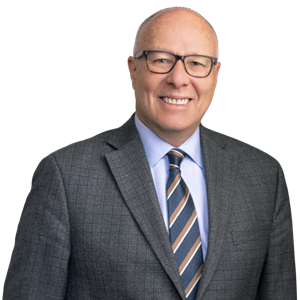
During a Pandemic, is a Grocery Store Run the Same as a Baptism Under the 1st Amendment?
SCOTUS Sets Aside New York Limits on Religious Gatherings
The U.S. Supreme Court’s decision to halt, on First Amendment grounds, enforcement of New York’s COVID-19-related restrictions on indoor worship services contradicts, in some ways, the Court’s earlier decisions upholding other states’ COVID-19 restrictions. In any event, last week’s decision signals that:
- New York’s restrictions may have just been too strict to pass the test that other states’ orders passed earlier this year,
- As the COVID-19 crisis ages, government emergency regulators should review and refine their rules and/or
- The new Supreme Court has a new outlook on religious freedom.
To be safe, government emergency response plans need to assume the latter. The case, brought by the Catholic Diocese of Brooklyn, reached the Supreme Court as an appeal from the lower courts’ denial of injunctions against State enforcement. It was consolidated with a similar case brought by a Jewish organization. The religious groups asked the Court to stop New York from enforcing its indoor religious services ban until the lower court decided the case on the merits. The Court agreed and granted an injunction.
The religious organizations sought to enjoin Gov. Andrew Cuomo’s executive order, which resembled California Gov. Gavin Newsom’s order in many respects. Depending on the severity of the pandemic in various “zones,” either “red” or “orange” restrictions applied to religious gatherings. In red zones, no more than 10 persons could attend each religious service; in orange zones, attendance was capped at 25. The limits applied regardless of the building’s capacity, the congregants’ ability to comply with other precautionary measures or their congregation’s track record with infections.
Lack of First Amendment Neutrality
The Court turned first to the key finding for granting an injunction (i.e., the likelihood the case would succeed on the merits). A new majority of the Court (including recent appointee Associate Justice Amy Coney Barrett) found that the New York order failed for lack of First Amendment neutrality because it “singled out houses of worship for especially harsh treatment.” First, the Court found problematic the State’s categorization of churches as non-essential services while, on the other hand, it categorized as “essential” such businesses as acupuncture facilities, camp grounds, garages, accountants, lawyers, liquor stores, chemical manufacturing plants and all transportation facilities.
Further, where non-essential businesses that were permitted to open could determine how many people to admit, churches could only admit 25 people under any circumstances. Factories and schools had contributed to the pandemic’s spread, but were not subject to the same capacity limitations. The regulations did not “flex” in accordance with building size. So, for example, two buildings that could seat 1,000 worshipers were subject to the same 10/25-person limit. The majority also found that the order caused “irreparable harm” to the plaintiffs because “[t]he loss of First Amendment freedoms, for even minimal periods of time, unquestionably constitutes irreparable injury.” The fact that certain religious rites, such as a Catholic communion, requires person-to-person interaction also suggested that the order was too harsh, especially without any specific connection between the prohibited behavior and resulting infections.
Different Conclusions
The majority’s opinion was coupled with two concurring opinions (by one justice each) and two dissenting opinions (by two justices each). Associate Justice Neil Gorsuch’s concurring opinion went to some length to explain why the Court had reached a different result in this case as compared to its upholding of the California emergency order at issue in South Bay Pentecostal Church v. Newsom, decided last summer.
First, Gorsuch distinguished the California facts by pointing out that the South Bay decision had come at the early stages of the pandemic, just 90 days after the pandemic’s outbreak, in different circumstances from this fall, when courts could expect executive decision-makers to fine tune the connection between public health goals and impairment of religious practices. Gorsuch also suggested that the 1905 case on which the South Bay decision relied, Jacobson v. Massachusetts, (“towering authority that overshadows the Constitution during a pandemic”) is no longer valid precedent.
Associate Justice Brett Kavanaugh, who dissented in the South Bay decision, distinguished California’s rules from New York’s on the basis that the latter were “much more severe” than California’s that, in similar circumstances, allow church attendance of up to 99 congregants. As in South Bay, Kavanaugh found it problematic that huge houses of worship were limited to miniscule attendance caps. Kavanaugh pointed out that secular businesses were not subject to similar caps, but didn’t mention a finding the majority made in South Bay, i.e., that a short stop for groceries or prescriptions involve much less risk of infection than an hour-long religious service.
Dissenting Opinions: Needless Judicial Intervention
The dissenting justices were focused on these issues, but mostly on what they saw as needless judicial intervention at this stage. During the pendency of the court proceedings and appeals, New York had relaxed the restrictions in question, re-categorizing the churches’ neighborhoods so they were no longer in red or yellow zones. The dissenting justices thought that this mooted the challenge to the regulations, making judicial intervention unnecessary. But the majority thought that, with the possibility that the rules could tighten again at any given moment, the challenge to them could be brought and heard now.
Local Government Takeaways
Taking these several opinions together, regulating agencies should:
- Consistently re-evaluate and re-calibrate their COVID-19 strategies as the pandemic ages, especially as vaccines mitigate public health risks;
- Double-check that regulations limit all similar behavior and gatherings on equal terms, regardless of whether they take place for the purpose of religious observance or secular purposes;
- Review exemptions carefully to ensure they are linked to infection risks, in particular, potential proximity to carriers and the length of exposure to them (an exemption for a 15-minute grocery run might be preferred over a one-hour religious service, but a one-hour exemption for office meetings would not).
Disclaimer: BB&K Legal Alerts are not intended as legal advice. Additional facts, facts specific to your situation or future developments may affect subjects contained herein. Seek the advice of an attorney before acting or relying upon any information herein.




